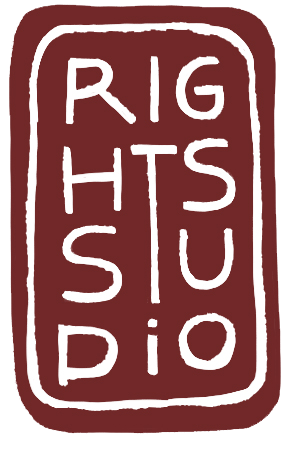By Kerry Whigham

We see the past through two lenses that inform each other, that overlap: history and memory. History encompasses everything that occurred in the past. The facts. The events. The dates. History is static.
Memory, on the other hand, moves. It is a dynamic force. Memory is the way we understand our past. It is the way the past impacts us in the present. It is the way the past shapes our visions for the future.
We call some things history—the things we learn in school, for instance, or the words included in the pages of a textbook. But this is only one aspect of the past. A part of it that has been called official, sanctioned through the consensus of the majority or the imprimatur of the State. This is memory masquerading as history. It is not the past, but an interpretation of the past that shapes who we are, how we interact.
Memory moves. It changes as our relationship to the past changes. It moves when people begin to question the “official” narratives of the past, to assert the stories of the forgotten, the disadvantaged, the persecuted. Memory moves when those whose voices have been silenced break down sonic barriers, demanding to be heard. A Black businessman tires of walking under the shadow of a Confederate general on his way to work each day. A Korean grandmother formerly enslaved by Japanese soldiers in World War II breaks through decades of stigma and silence to tell her story. An Argentinian mother dons a white scarf and carries a photograph of her disappeared son to the square in front of a presidential palace, demanding his return. The memory of what they have lost moves them to act. In turn, their actions move memory, amending the ways that others understand the past.
In this way, memory moves us. The past is not passed. It impacts who we are, how we see the world, and how we relate to others. Viewing the past differently can move us to act in unexpected, powerful ways. The voice of a genocide survivor, a water protector, the great grandchild of an enslaved African, a former child soldier—their voices demand attention. We must attend to them, in the true sense of the word:
ad (to, toward) + tendere (stretch)
We stretch toward them, breaking the boundaries that fragment, reaching across rifts, creating new communities.
Through attending, stretching across divides, memory moves us to act together, and memory movements emerge. “Never doubt that a small group of thoughtful, committed citizens can change the world,” said Margaret Mead. “Indeed, it is the only thing that ever has.” That small group has done it, however, by becoming a larger group. So often the seed that grows this committed group into a movement is memory.
And not just one memory. Many memories, reflecting and rebounding off each other.
The memory of a policeman’s knee crushing the neck of George Floyd
recalls the memory of Eric Garner and his pleas for air
recalls the body of 18-year-old Michael Brown, shot dead in the streets of Ferguson,
recalls the rifle shot at the Lorraine Hotel in Memphis, Tennessee, that felled a giant
recalls fire hoses turned against humans
recalls dogs biting at their legs
recalls segregated bathrooms and water fountains
recalls slave patrols and underground railroads
recalls the crack of a whip
recalls the beat of a drum
recalls the scream of a girl
recalls the yawp for freedom
recalls bodies piled upon bodies piled upon bodies in ships crossing the Atlantic.
Memories multiply. They multiply upon each other, but they also cause us to multiply. A memory that begins in the heart and mind of one person or that “small group of thoughtful, committed citizens” spreads, and that group multiplies into a movement, and that movement moves us, moves governments, moves mountains.
So very often, the memories that move us are those that are most painful. Memories of collective loss, suffering and death. We could allow those memories to move us toward greater division—and we certainly have. Memory can move us to hate, to separate, to seek revenge. The memory of planes toppling buildings can move us to war. The memory of genocide can move us to isolation and defensiveness. The memory of stolen territory and civil war can move us to erect borders and walls and monuments and laws that prolong conflict and forestall peace.
But not always. When we remember not only our painful pasts—more painful for some than others, to be certain—but also the fact that we are all, at heart, connected by a shared humanity, memory can move us to accomplish incredible things. Tides can be turned, histories rewritten, worlds transformed.
Violence dismembers us. Through memory, to borrow from Toni Morrison, we can re-member ourselves. We can put ourselves together again.
Kerry Whigham is the Director of Research and Online Education at the Auschwitz Institute for the Prevention of Genocide and Mass Atrocities, an international non-governmental organisation that works with over 90 countries around the world on creating public policy for the protection of vulnerable groups and the prevention of mass atrocities. He is Assistant Professor of Genocide and Mass Atrocity Prevention at Binghamton University’s Institute for Genocide and Mass Atrocity Prevention (I-GMAP). He received a Ph.D. in Performance Studies from New York University. He has published articles in Genocide Studies and Prevention, The Journal of Latin American Cultural Studies, Public Administration Review, Tourist Studies, Material Culture, and Museum and Society. He is also the Communications Officer and a member of the executive board for the International Association of Genocide Scholars (IAGS). He is the curator of Artivism, an art exhibition on the connection between art, activism, and atrocity prevention that began in Venice during the 2019 Art Biennale and is now travelling to museums around the world.
This article was a contribution to the Rights Studio Magazine What Lies Beneath on Movement.
